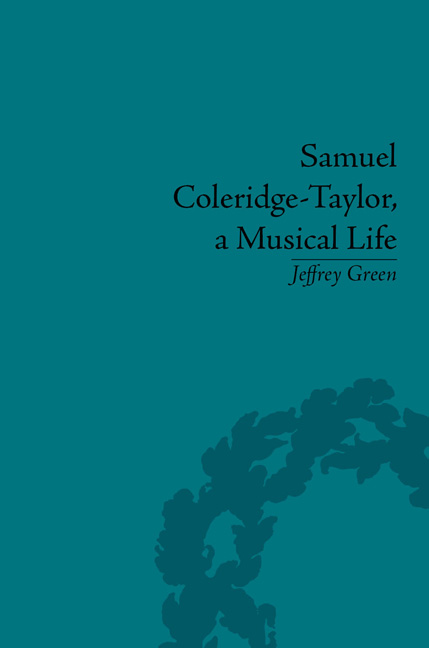Book contents
- Frontmatter
- CONTENTS
- Dedication
- Acknowledgements
- List of Figures
- Introduction
- 1 The Early Years
- 2 The Royal College of Music
- 3 The Promising Young Composer
- 4 The Wedding Feast
- 5 ‘A Sentiment Prevalent Here’
- 6 Intensifying the Effect
- 7 The International Star
- 8 A Stalwart Member of the Profession
- 9 A ‘Definite Place for the Negro in the World's History’
- 10 A Tale of Old Japan
- 11 Requiem
- 12 The Legacy
- Postscript
- Appendix 1 The Song of Hiawatha
- Appendix 2 Further Reading
- Notes
- Works Cited
- Index
3 - The Promising Young Composer
- Frontmatter
- CONTENTS
- Dedication
- Acknowledgements
- List of Figures
- Introduction
- 1 The Early Years
- 2 The Royal College of Music
- 3 The Promising Young Composer
- 4 The Wedding Feast
- 5 ‘A Sentiment Prevalent Here’
- 6 Intensifying the Effect
- 7 The International Star
- 8 A Stalwart Member of the Profession
- 9 A ‘Definite Place for the Negro in the World's History’
- 10 A Tale of Old Japan
- 11 Requiem
- 12 The Legacy
- Postscript
- Appendix 1 The Song of Hiawatha
- Appendix 2 Further Reading
- Notes
- Works Cited
- Index
Summary
During his student years Coleridge-Taylor heard the ambitions of colleagues and the views of his grandfather and uncle about opportunities in music. Would the students return to their hometowns or seek opportunities in London or elsewhere? What about a career as a soloist? Should they take pupils or study further, perhaps on the Continent? Could they manage several of these options at the same time? What would they earn? There were hundreds of instrumentalists in London's fifty music halls and many theatres had orchestras. Grand hotels and restaurants employed musicians but no British orchestra performed throughout the year. High society's grand houses used musicians, festivals employed them for several days and resorts mounted concerts. They would earn two pounds per week, three or more in hotels, but without any regularity. By abandoning the organ Coleridge-Taylor turned away from the only reliable paid work for a musician in late Victorian England outside the military. He was known to London critics and publishers as a promising composer. He could play the violin and the piano, was already teaching in Croydon, and had made many contacts. He lived close to the Crystal Palace where Manns's Saturday concerts attracted thousands and the new Queen's Hall in central London was within reach. There were other opportunities; and pitfalls too.
- Type
- Chapter
- Information
- Samuel Coleridge-TaylorA Musical Life, pp. 45 - 62Publisher: Pickering & ChattoFirst published in: 2014



